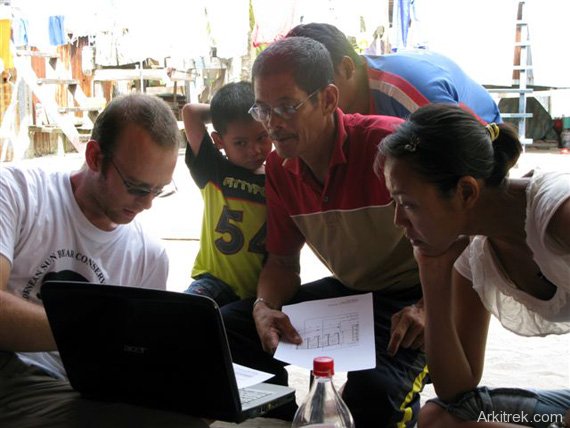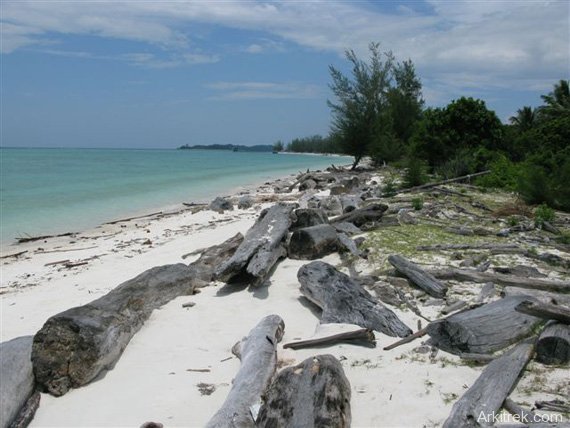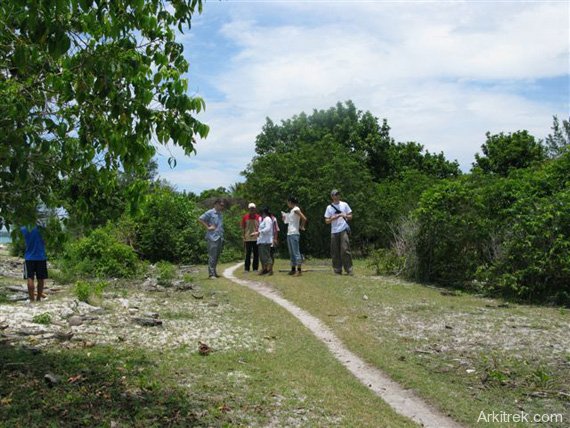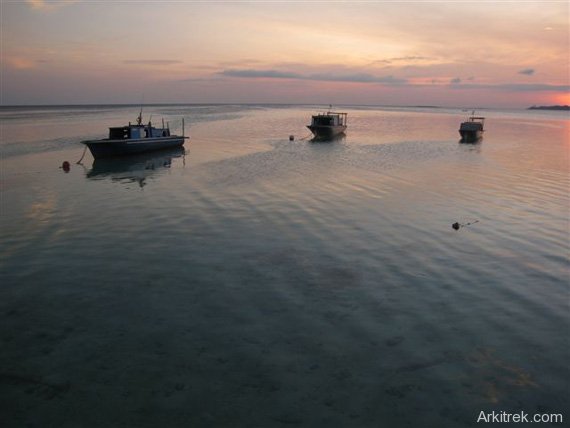Sustainable Design Mantanani-style
We can always come up with wonderful ideas for sustainable buildings but if the locals can’t build and maintain it then it’s not sustainable.
Camps International are building a camp on Pulau Mantanani, a coral island off the northwest coast of Borneo.
Their other two camps in Borneo, at Tinangol and Kipouvo were designed and built entirely by the local communities. This was possible because at Tinangol the camp (a traditional longhouse) was already built and at Kipouvo they wanted a homestay modeled on ‘standard’ village housing.
Mantanani was different because the brief was more specific and there was no precedent to follow. Arkitrek was asked to interpret Camp International’s brief and communicate this to the Albi, the village headman and construction manager.
After a long and linguistically challenging day we were all best buddies with the villagers and had learned much. For example, I should have known by now that the Malay for ‘ridge plate’ was ‘kuda kuda’ which literally translates (with a bit of comedic license) as ‘horsey horsey’.
Another harder lesson affected my sustainable design intentions. Although the brief was for very simple buildings, I had identified two areas where I was going to try to push some sustainable design agenda:
1. Not to use Belian Posts
2. To use Rainwater Harvesting
At the end of our day with the Albi I had abandoned the first principle and put the second on hold.
Belian is a hardwood species indigenous to Borneo. It is much denser than water and it is the only timber that will last more than two years if stuck in the ground. Most traditional stilt houses use belian posts. There are not many belian trees left and most of what is available comes from spurious sources.
My alternative proposal to use coconut trunks met with a barrage of chin scratching and tooth sucking. “it’s not durable” “you can’t put it in the ground” “the centre goes soft” “cannot”. Was the unanimous advice.
I was prepared for this and had researched details to get around all these issues but as I launched into an explaination I felt my language faltering, not from lack of vocabulary but lack of confidence.
It dawned on me. Steel flitch plates and cunning nail-free joints were not going to cut it at this point in time. The first priority was to get a camp manager’s house built and the best way to get this done quickly is to let the villagers build it using their own technology.
On the water issue I was more inclined to argue.
“why don’t you collect rainwater?” I asked Albi
“why would you do that when you can pump it out of the ground?” he queried back
“one day it might stop coming out of the ground” I suggested
“oh no! never, it’s always been there” he asserted
And so I left it at that for the time being but at the back of my mind something is nagging.
“Pulau Mabul is in big trouble” an environmental scientist friend confided to me recently. Mabul is a low lying coral island off the East coast of Sabah. It is popular with divers and also home to local Bajau fishermen. The populations of both are growing and most of their water comes from wells.
The issue is that water is pumped out of the wells and the waste discharged into the sea. This causes the freshwater aquifer under the island to shrink and the salt water to encroach. On Mabul the salinity has increased to the extent that vegetation may not regenerate.
Once the vegetation goes the island would be exposed to erosion and in the worst case become no more than a sand bar.
The solution is not to take more than can be replaced by rainwater and to return the (treated) waste water to the centre of the island, rather than throwing it away into the sea.
On Mabul I am told that the demand has already exceeded it’s supply to the extent that without depopulating the island, the only solution is to pipe or ship in fresh water from the mainland.
On Mantanani there may still be time to manage the balance sustainably and this will be a focus for future trips.
Having reached an amiable agreement on the design and construction of the camp manager’s house we left the island satisfied but with an exciting edge of suspense. On our return would the house look anything like we expected?
above photos by Bob Hartley
photo by Ian Hall
Related posts
%RELATEDPOSTS%





